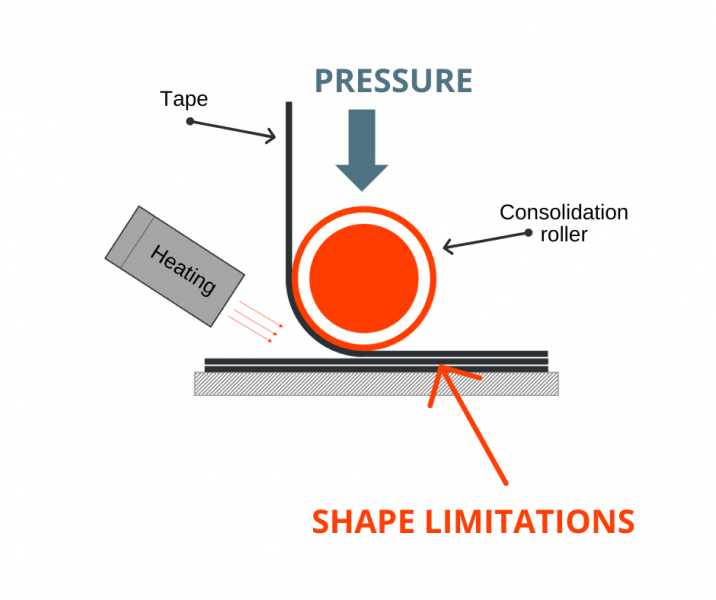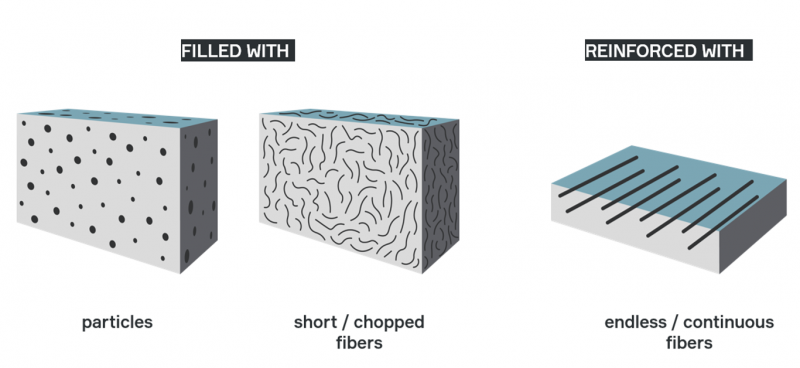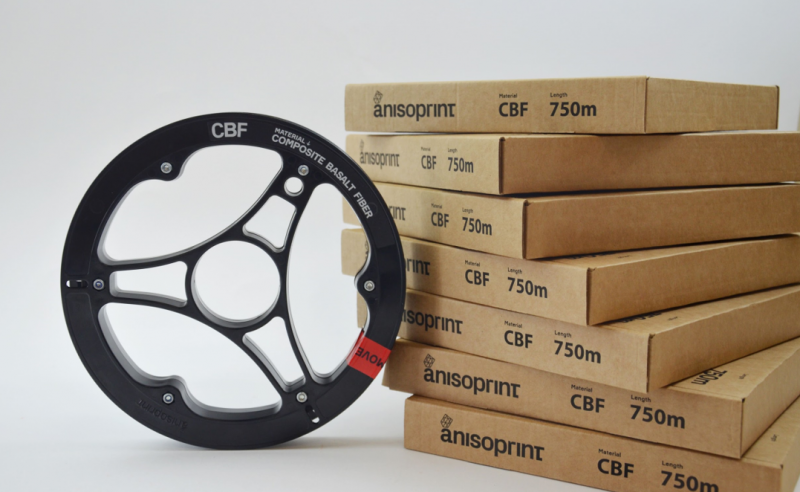
With a decade of expertise, it’s safe to say Anisoprint knows a thing or two about continuous fiber 3D printing. The Russian manufacturer specializes in composite fiber co-extrusion 3D printers capable of fabricating high-strength reinforced parts. The company also develops and supplies the fiber-reinforced materials that enable the multitude of applications of the niche technology.
We sat down with Anisoprint to learn a little more about the subject ahead of an educational webinar that will be delivered by the company’s CEO, Fedor Antonov, on July 21st.
High fiber volume isn’t everything
Engineers working in composite manufacturing will know that a high fiber volume ratio means a great deal when it comes to part strength. Most professional and industrial components require around 40% – 60% when produced, for example, with traditional automated fiber placement machines. These machines systematically lay down sheets of base material alongside bundles of fibers, using a pressure roller to induce adhesion.
When it comes to additively manufactured composite parts, packing in a healthy 50% would be great but it’s simply not feasible a lot of the time. The problem is: higher fiber volume ratios require more consolidation between the layers to push out the trapped air. This just means more pressure needs to be applied after each layer to get it to bond reliably to its neighbors.
Due to the angular limitations of a roller and the stability limitations of the part being rolled, consolidating certain sections of a 3D printed part, like thin walls or overhangs, may prove difficult. With such pressure, you can’t produce lattice structures — the most optimal shape for composites — since they consist of thin walls. So, the higher the fiber volume, the more design freedom you give up – an unfortunate relationship given that this is supposed to be one of 3D printing’s main benefits.

A roller consolidating layers during automated fiber placement. Image via Anisoprint.
Chopped fibers vs. continuous fibers
Strengthening fibers can be split up into two main categories – chopped fibers and continuous fibers. They may sound functionally one and the same but have very different effects on the mechanical properties of a part.
Antonov explains: “There is a lot of confusion between short fibers and continuous fibers. Both form composites but only continuous fibers can truly be seen as ‘reinforcements’. Chopped fibers simply fill the material matrix without any orientation while continuous fibers run end to end being oriented in the same direction. Since the strength of the composite lies along the fibers, continuous fibers are the only way to get a strong part.”
The difference is significant. Looking at Anisoprint’s very own in-house test data, a chopped fiber-filled composite tends to be about twice as strong as a pure plastic. Impressively, a continuous fiber-filled composite can be around 30x as strong – a very stark difference.

Filling a part vs. reinforcing a part. Image via Anisoprint.
Not only carbon
Carbon fiber printing is often used interchangeably with continuous fiber 3D printing. While carbon fiber is one of the more well known, there are other materials that can be used for reinforcement. Engineers looking to utilize the technology can access fiberglass, aramid, basalt, and even natural fibers as they all have varying properties and use cases.
Aramid, much like carbon fiber, is known for increasing the strength of a part but it also adds excellent impact and damage tolerance – a property not granted by carbon fibers.
Basalt, an economical alternative to carbon, may be preferred when cost-efficiency is key but part strength isn’t very high on the list of priorities. Plastic reinforced with Anisoprint’s Composite Carbon Fiber / CCF typically displays strengths of up to 860MPa. However, plastic reinforced with basalt based material (CBF) sits at 600MPa and is only two-thirds of the price, giving you more bang for your buck.

Anisoprint’s basalt-based CBF material. Photo via Anisoprint.
Readers interested in learning more about the continuous fiber 3D printing technologies currently in the market can sign up for next week’s webinar here. The speaker, Fedor Antonov, holds a Ph.D in Fundamental Mechanics and has over ten years of academic and industrial experience working with composite materials.
Featured image shows Anisoprinted parts with inner lattice structures for optimal strength. Photo via Anisoprint.


